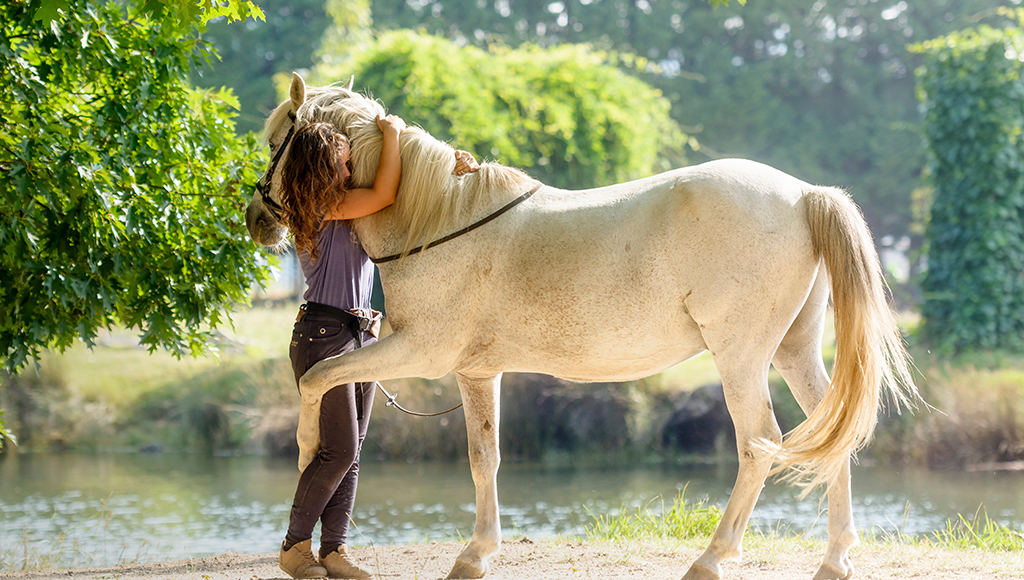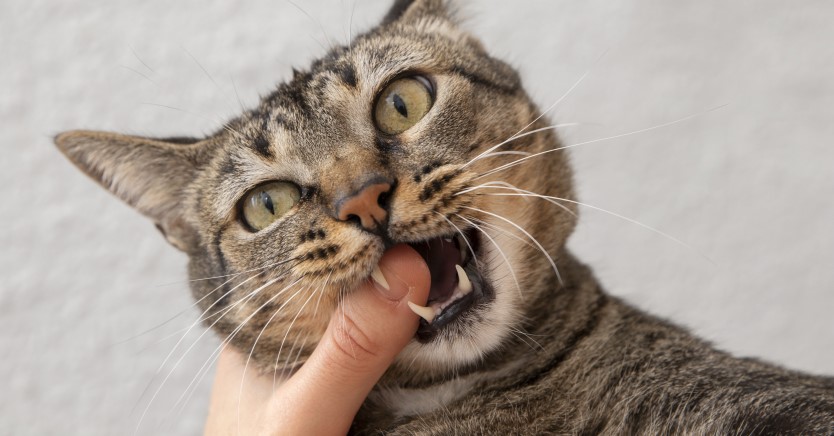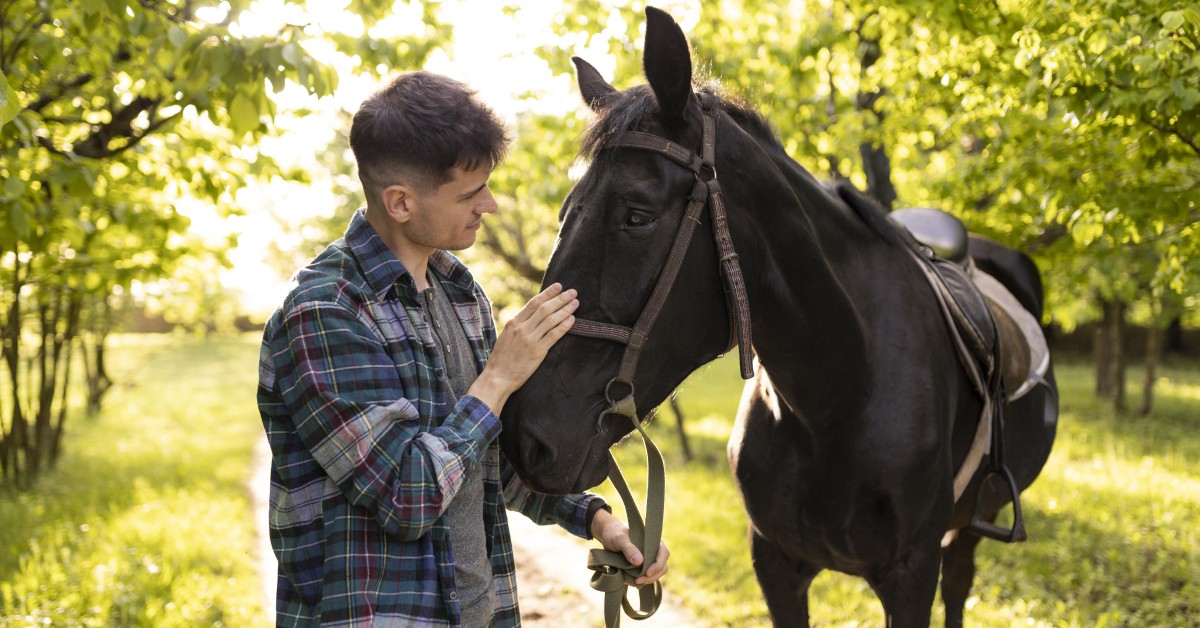Equine Care: Keeping Legs Strong and Healthy
This is essential for maintaining your horse's health and helping him thrive.

Even though horses are big, strong animals, their legs are surprisingly delicate. Horses spend most of their time on their feet, so it's essential that you keep their legs strong and healthy. The muscles and tendons that make up the legs can get injured quite easily. Your horse might stumble and cut his front leg with his back hoof, or he could land awkwardly after a jump and strain a tendon. Constant pounding on hard surfaces can also damage a horse's legs. Leg injuries can be serious for a horse because many can take months or even years to heal. It is also possible that some leg injuries might never heal properly, which would leave you with a lame horse. Obviously you can't leave your horse in his stall and never take him out, nor can you wrap his legs in bubble wrap, but there are some things that you can do to help your horse stay strong and sound and his legs healthy:
1. Boots
If you’re going to jump or gallop, put brushing boots or splint boots on your horse. These are padded boots that go on all four legs protecting your horse in case he knocks his front legs with his hind hooves, which can cause bruises or cuts. Padded boots also give your horse extra support to the muscles and tendons in his legs. If a horse is traveling at fast speeds, a hind hoof may "overreach" and tread on the heel of a front leg, causing a nasty cut that may take forever to heal. Prevent these cuts by putting rubber overreach boots on his front legs.
2. Avoid Hard Ground
Try to avoid riding your horse on hard ground whenever possible. If you use an exercise ring and the dirt is rock hard, stick to just walking or move out into grassy fields. Riding on hard ground causes concussion in your horse’s legs as he bangs on the ground with his hooves. This concussion can injure or weaken the tendons and bones in his legs and can cause arthritis or navicular when he gets older. If you board your horse at a barn or location other other than your own stall, it’s the owner’s responsibility to make sure the ring surface is kind on your horse’s legs. The ring should be raked or dragged regularly, so check with the facility to see that this is being done. If the ring is always hard, strongly consider moving your horse to a place where the owner cares about horses’ legs.
3. Daily Checks
Take a look at your horse’s legs every day. You should be picking out your horse’s hooves on a daily basis, so checking his legs at the same time is a great way to identify any unhealthy conditions that may be developing before they cause serious damage. If he lives in a pasture, walk out and run your hands down his legs to feel for lumps and bumps that might need treating.
4. Treat Swellings or Lameness Immediately
If you spot an injury on your horse’s leg, spray cold water on it to remove blood so you can get a closer look. If the wound is serious, call the veterinarian right away because it might need stitching. If the bleeding doesn’t stop, place a bandage over the cut and use your hand to apply pressure to the wound until the vet arrives. If you notice swelling on a leg, feel it right away. If it feels hot, hose it with cold water for about 15 minutes, then check it again. Cold water can reduce swelling. If the leg still feels hot, call the vet and explain the situation. He may tell you to put an ice pack on the swelling, or he may say keep on hosing until he can get to your barn to examine your horse.
5. Handle Young Legs With Care
Young horses have bones that are still growing and developing, so it’s important that you don’t work them too hard at an early age. If a youngster is lunged on hard ground or galloped too much he may develop arthritis later on. You may also damage his delicate tendons and muscles. If you back a horse at two, stick to slower speeds and don’t do too much with him until he’s a bit older. Many sport horse people start horses under saddle when they turn three. And it’s not a great idea to jump a horse until he’s at least four because you can put too much stress on his young bones.
6.Regular Shoeing and Trimming
Schedule your farrier on a regular basis and try to get him or her to trim or shoe your horse every five or six weeks. You don’t want shoes falling off or hoof cracks getting bigger and bigger. If your horse has lameness issues, a good farrier will be able to forge therapeutic shoes for him. These are special shoes that may help your horse stay sounder.
7. Joint-care Supplements
If your older horse is starting to shows signs of arthritis (stiffness or lameness), you could try putting him on a joint-care supplement. These supplements contain joint lubricants such as glucosamine hydrochloride, chrondroitin sulfate or hyaluronic acid. Before choosing and administering any kind of supplement to your horse, It's always a good idea to consult your veterinarian first, to see if he/she thinks a particular supplement would be beneficial.
8. Warm Up Gradually
Just as it is important for humans to warm up their heart and limbs before strenuous exercise or activities to avoid strained muscles, it is just as important to warm up your horse gradually before taking him out for a gallop or long run. Don’t just jump on your horse and start galloping around the arena or through the fields. Always walk for five or ten minutes before you start jogging or loping. and remember to cool down your horse as well. Spend about five or ten minutes walking before you take him back to the barn and untack him.
9. Sufficient Bedding
Don’t skimp on straw or shavings in your horse’s stall or pen. Horses can injure their legs while lying down or getting up if they are kept on hard concrete floors. Horses can also get painful sores on their hocks if there isn’t enough bedding in their pens or stalls.
10. Outside Living
A horse’s leg joints are far healthier if he spends most of his time outdoors in a field, able to move around where he likes. If he stays in a stall all the time, he can get stiff. Young horses, especially, should spend lots of time outdoors. If they spend too much time stuck in a stall their bones won’t grow and develop normally and this can cause lameness or arthritis when they get older. Older, arthritic horses seem to limp less and be less stiff if they spend lots of time outdoors as well.
Proper equine care starts from the ground up with constant, consistent care of your horse's legs. Keeping your horse's leg's healthy will help him thrive and stay strong for many years.
Ready to start saving money on pet wellness care?
Then take a look at Mint Wellness, the pet wellness plan that provides fast reimbursement on routine pet care. Save on vaccinations, wellness exams, preventatives, dental, and more!
Learn More


